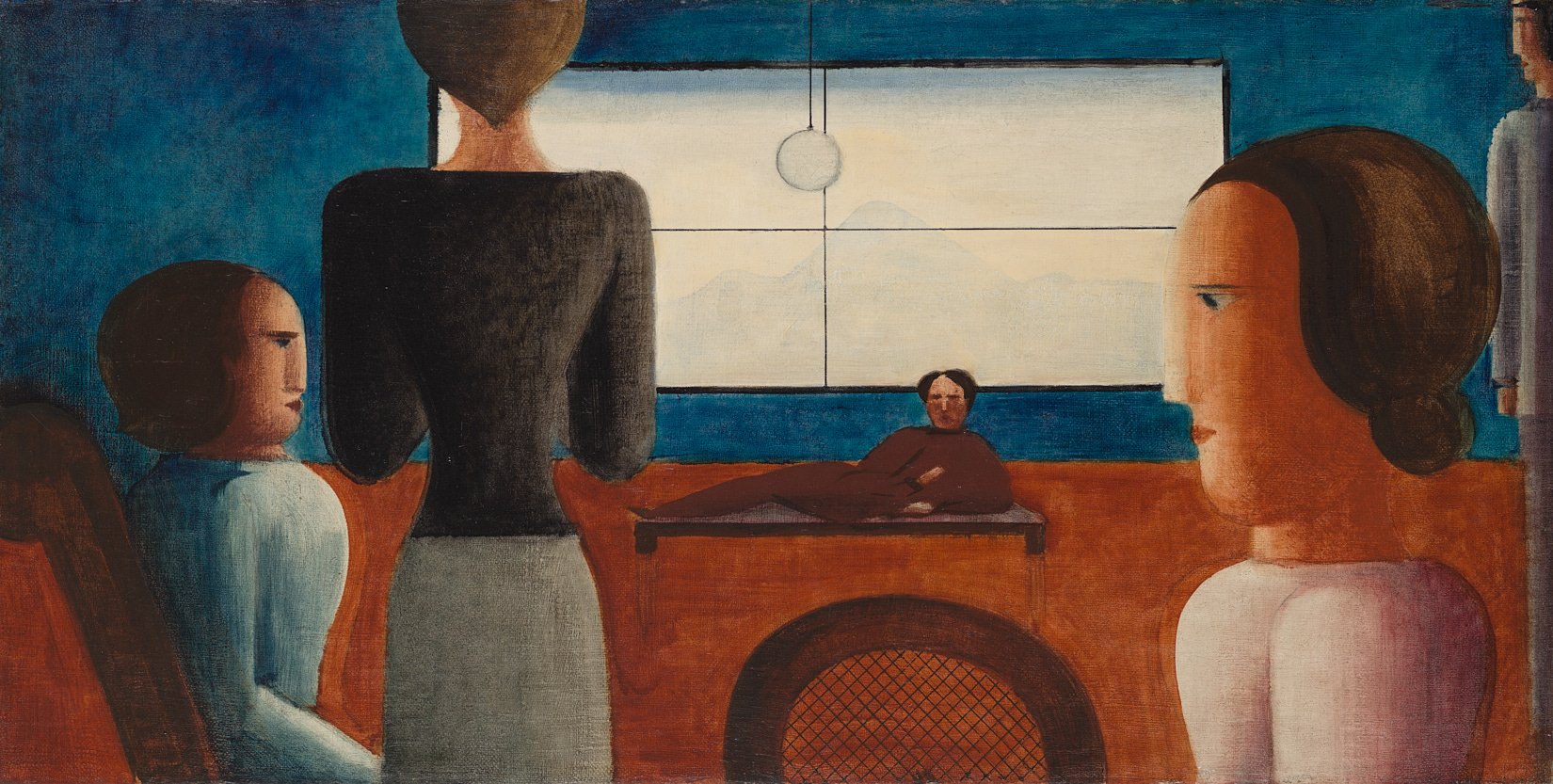Oskar Schlemmer
Interior with Five Figures, 1928

Oskar Schlemmer
Interior with Five Figures or Five Figures in Space, 1928
Kunst Museum Winterthur, Schenkung der Volkart Stiftung, 2009
Foto: SIK-ISEA, Zürich (Martin Stollenwerk)
The Bauhaus was an innovative school. It was founded in 1919 in Weimar, and was moved to Dessau in 1925. Alongside painting and drawing, architecture and applied art were also taught at the Bauhaus, and for the first time a school had been dedicated to design encompassing all areas of life. Renowned artists taught there– Klee, Kandinsky, Albers, and Oskar Schlemmer also. Although abstract art was dominant at the Bauhaus, Schlemmer specialized, as always, in the concept of the human figure in physical space, because it was here that figures could first really unfold, and Schlemmer therefore regarded figures and space as being inextricably interconnected.
In this picture the room is completely focused on the large window. The geometrical division appears to be the principle of arrangement for the room and the five figures, and these are no individuals, but are stylised figures. Their typecasting is reminiscent of early Renaissance painting. Schlemmer portrays the figures in distinct positions: frontal, rear view or in profile, as half, or complete figure, standing, sitting or lying, carefully offset against one another. The figures are isolated and self-absorbed, but connected to one another in the room, embedded in the warm blue and brown colouring of it.
On the lower edge of the picture there is an empty chair. It invites the viewer to take a seat opposite the lying figure with the raised hand. This figure appears to be lost in reverie, and we look beyond her into the diffused light and discover the distant silhouette of a mountain, which is hardly visible.


